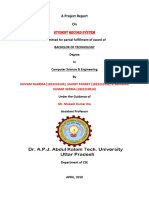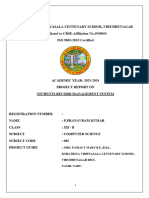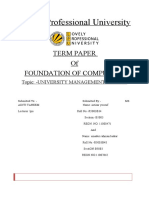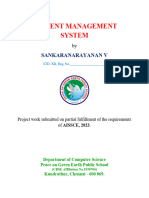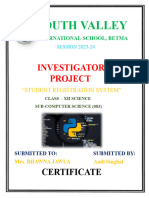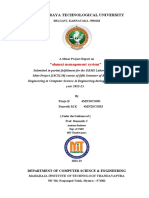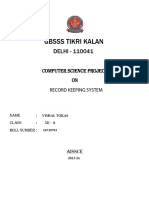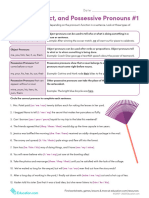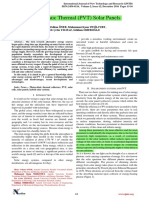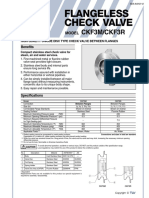0% found this document useful (0 votes)
35 views12 pagesCSE343 Python
The document is a training report by Prince Arora on the development of a Student Record Management System using C++ and Python, submitted to Lovely Professional University. It details the project's objectives, methodologies, and outcomes, including data management, statistical analysis, and the implementation of various programming concepts. The report also includes acknowledgments, a list of contents, and insights into the project's findings and future enhancements.
Uploaded by
sarvagya911Copyright
© © All Rights Reserved
We take content rights seriously. If you suspect this is your content, claim it here.
Available Formats
Download as PDF, TXT or read online on Scribd
0% found this document useful (0 votes)
35 views12 pagesCSE343 Python
The document is a training report by Prince Arora on the development of a Student Record Management System using C++ and Python, submitted to Lovely Professional University. It details the project's objectives, methodologies, and outcomes, including data management, statistical analysis, and the implementation of various programming concepts. The report also includes acknowledgments, a list of contents, and insights into the project's findings and future enhancements.
Uploaded by
sarvagya911Copyright
© © All Rights Reserved
We take content rights seriously. If you suspect this is your content, claim it here.
Available Formats
Download as PDF, TXT or read online on Scribd
/ 12









